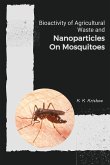This book delves into the use of bioremediation techniques, specifically mycoremediation and phytoremediation, to address the environmental and health hazards caused by tannery effluent containing heavy metals. This book provides a comprehensive overview of the various fungal and plant species that have been studied and utilized in the bioremediation of tannery effluent, highlighting their unique characteristics and capabilities in metal uptake and removal. It also discusses the mechanisms and processes involved in bioremediation, including the roles of enzymes and plant-fungal interactions. Through extensive research and experimentation, a detailed understanding of the potential of bioremediation as a sustainable and cost-effective solution for tannery effluent treatment is provided. This book also discusses the challenges and limitations of bioremediation, as well as the need for effective monitoring and management strategies to ensure the safety and success of bioremediation projects. Written in a clear and accessible style, this book is an essential resource for researchers, students, and professionals in the fields of environmental science, biotechnology, and engineering. It provides valuable insights into the use of bioremediation techniques in the treatment of industrial effluents and offers practical recommendations for the development and implementation of sustainable and effective bioremediation strategies.








